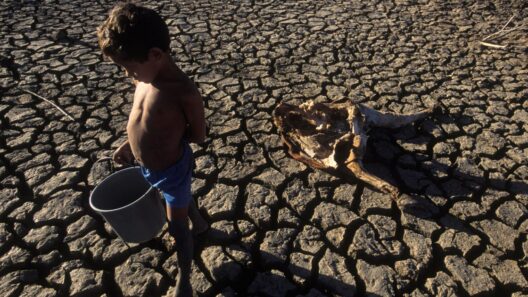Pine and fir trees have long captivated the human imagination. Their towering stature and perennial greenery not only enhance the beauty of landscapes but also serve significant ecological functions. Among these functions, their role in combating global warming is particularly noteworthy. As concerns regarding climate change escalate, understanding how these coniferous trees contribute to reducing atmospheric carbon dioxide becomes ever more pertinent.
In essence, trees act as natural air conditioners. They absorb carbon dioxide (CO2), one of the primary greenhouse gases responsible for global warming. This occurs through a process known as photosynthesis. During this vital process, trees take in CO2 and, with the aid of sunlight and water, convert it into glucose and oxygen. The oxygen is released into the atmosphere, while the glucose is used to support growth. Pine and fir trees, with their expansive needles and robust structure, are particularly adept at this carbon sequestration process.
Pine trees, belonging to the Pinaceae family, are characterized by their long needles and cone-bearing reproductive structures. These trees are not merely aesthetic; they are efficient carbon sinks. Research indicates that pine forests can sequester significant amounts of CO2—offering a stalwart defense against the escalating climate crisis. For instance, mature pine trees can absorb upwards of 40 pounds (approximately 18 kilograms) of CO2 annually. This figure varies depending on the species, age, and health of the tree, but it underscores the substantial contribution these trees can make to mitigating climate change.
On the other hand, fir trees, also members of the Pinaceae family, contribute similarly but exhibit unique attributes. Fir trees are often found in mountainous regions where their growth is impacted by altitude and temperature variations. Their dense canopies not only provide shade but also create microhabitats that help regulate local climates. In areas where fir trees dominate, summer temperatures can be noticeably cooler than in surrounding regions devoid of such vegetation. This cooling effect is particularly invaluable in urban environments, wherein heat islands commonly exacerbate temperature extremes.
The phenomenon of urban heat islands is a direct consequence of human activities, which elevate temperatures in densely populated areas. The proliferation of concrete and asphalt contributes to this escalation, leading to significant energy consumption for cooling purposes. By contrast, the introduction of coniferous trees such as pines and firs can ameliorate these effects. Their transpiration process—whereby they release water vapor into the atmosphere—contributes to localized cooling, effectively mitigating the impacts of climate change in urban settings.
Additionally, these trees provide habitats for a diverse array of wildlife. By fostering biodiversity, pine and fir trees further enhance the resilience of ecosystems against the disruptive forces of climate change. Healthy ecosystems, characterized by rich biodiversity, can better withstand environmental stressors. This interconnectedness exemplifies the importance of conserving these tree species as part of a broader environmental strategy to combat global warming.
Furthermore, there is an intriguing aspect of pine and fir trees that merits consideration: their role in soil health. The needles shed by these coniferous trees decompose slowly, creating a layer of organic matter known as duff. This material not only enriches the soil but also enhances its moisture-retaining capacity. Healthier soils contribute to improved carbon storage, creating a synergistic effect that enables these trees to further contribute to carbon sequestration.
Despite their numerous benefits, pine and fir forests face numerous threats, ranging from climate change-induced pest infestations to logging practices. The southern pine beetle and other pests thrive in warmer climates, jeopardizing the health of susceptible tree populations. Efforts to sustain these forests are essential, and forest management practices must prioritize the resilience of these ecosystems.
Implementing reforestation and afforestation projects can bolster the populations of these critical tree species. Initiatives aimed at planting pine and fir trees not only expand forested areas but also enhance carbon capture capabilities. Community-based programs that involve local populations in tree planting efforts can engage public awareness and foster a sense of stewardship over the environment.
Moreover, innovations in agroforestry are becoming increasingly recognized for their potential to combat climate change. Integrating tree planting into agricultural landscapes allows for a dual benefit: enhancing crop yields while simultaneously sequestering carbon. By fostering an environment where pine and fir trees coexist with agricultural practices, it is possible to create a sustainable paradigm that nurtures both food security and ecological health.
In summary, the role of pine and fir trees in combating global warming is multi-faceted. Their capabilities as carbon sinks, habitat providers, and climate regulators position them as invaluable allies in the fight against climate change. As society becomes increasingly aware of the urgency of environmental preservation, fostering a deeper understanding and appreciation for these magnificent trees is imperative. Ongoing research, conservation efforts, and innovative practices will serve to fortify the critical functions that pine and fir trees provide, ultimately contributing to a more sustainable future.
The time is now to recognize and embrace the profound impact of these coniferous giants. In their steadfast presence, we discover not merely a means to combat climate change, but a reminder of nature’s resilience and the intrinsic value of our ecosystems. Protecting and nurturing these trees will pave the way for healthier air, improved biodiversity, and a more temperate climate for generations to come.








